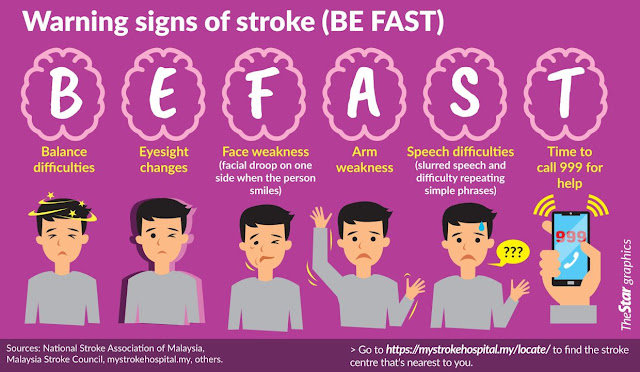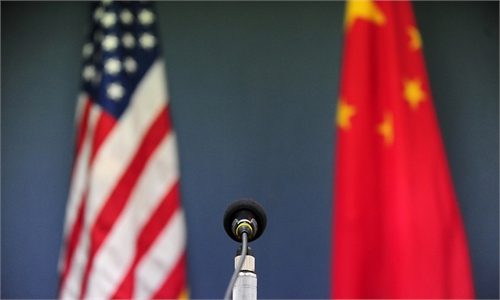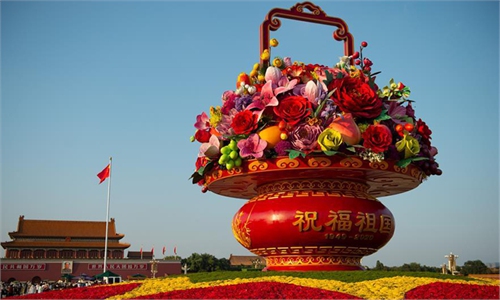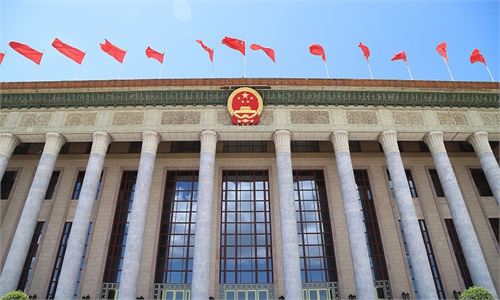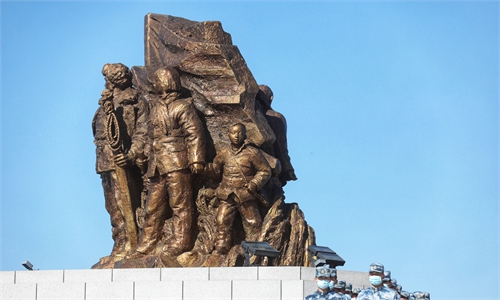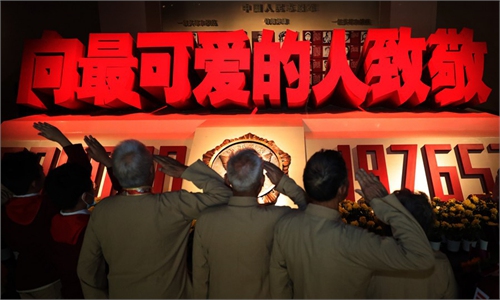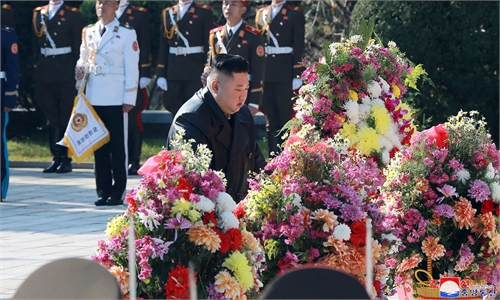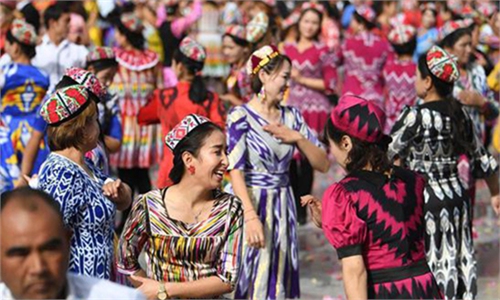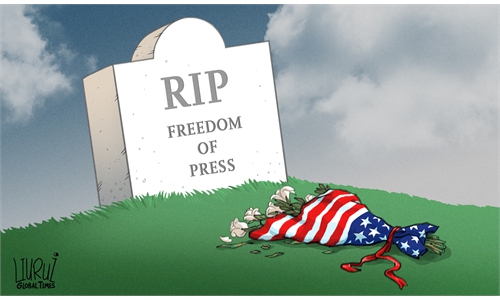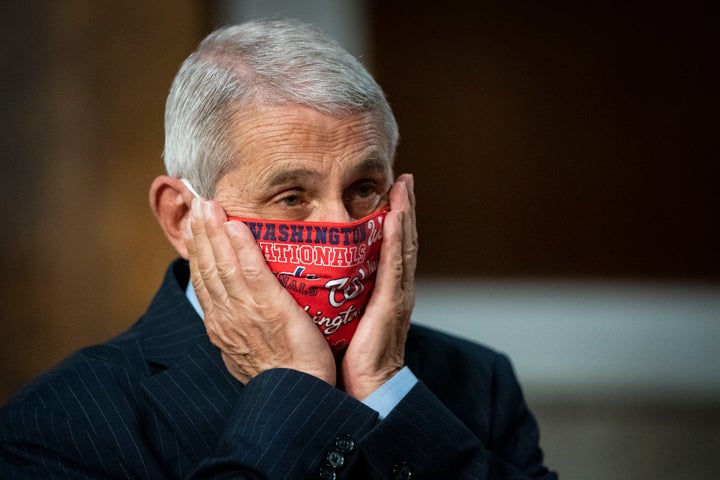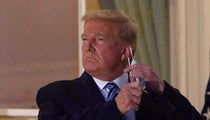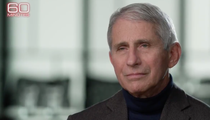How to recognise signs of a stroke, and what to do to minimise ...
The Health Ministry is mulling over an additional six stroke centres by 2024, while more medical teams will be trained by the Malaysia Stroke Council to address the lack of neurologists to treat the condition.
WHEN it comes to stroke, every second counts.
The bigger the delay in getting treated, the smaller the chances of full recovery.
In fact, two million brain cells die every minute until blood flow is restored.
“In other words, time is brain.
“The more time passes, the more brain cells are lost and may not be re-generated, ” says Malaysia Stroke Council president Assoc Prof Dr Hoo Fan Kee.
As it will be World Stroke Day this Thursday (Oct 29), there’s a need to look into main issues involving the disease here – the lack of neurologists to treat patients and limited access to stroke centres, especially in rural areas.
The good news is steps are underway to smoothen the road ahead for patients.
Currently, there are a total of 61 public and private stroke centres in Malaysia, according to Dr Hoo.
“It’s almost a double-fold increase from 34 in 2017.
“But we still need about 90 centres in the country, ” Dr Hoo adds.
For this, the Health Ministry is proposing to increase the number of public stroke centres to beef up treatment here.
“A proposal to add six more centres by 2024 is being considered.
“This is subject to budget availability to develop or upgrade such facilities, ” the ministry tells Sunday Star.
On Aug 14, the World Stroke Organisation recognised five Malaysian hospitals for achieving international standards in their stroke care practices.
Such news is encouraging but the challenge remains that there aren’t enough neurologists, or specialist doctors who treat diseases involving the brain, spinal cord, nerves and muscles.
“There are 99 registered practising neurologists in Malaysia.
“Of this total, 25 are working under the ministry, 24 are with the Education Ministry while the remaining 50 are in the private sector, ” the ministry says.
But this is a far cry from the recommended ratio of one neurologist per 100,000 population.
“Now, the ratio in Malaysia stands at one neurologist per 330,303 population, ” the ministry explains.
At the current population of 32.7 million, we would need to have another 228 neurologists.
Boosting medical help
Nevertheless, more trainees are being accepted for sub-specialisation training compared to the past.
“Over the last few years, about 10 trainees were accepted annually in public hospitals under the ministry while academic hospitals accepted one to two trainees each year, ” says the Health Ministry.
Concurring about the lack of neurologists, Dr Hoo says it doesn’t help that the distribution of such specialists is uneven, with most or about 40% being based in the Klang Valley.
“There’s still a need to boost the number of stroke-ready hospitals – centres with doctors and medical teams who are trained to handle cases.
“Some states only have a handful of hospitals that can treat stroke, ” he says.
For example, Kelantan, Terengganu and Pahang each have only two stroke centres.
To address this, Dr Hoo says the Malaysia Stroke Council will be coming up with a virtual training programme to grow the pool of medical teams that are able to treat stroke.
This will help equip non-neurologists to be able to treat stroke patients and increase the number of stroke-ready hospitals.
“The council will set up an online certification programme for the theory section of the training by the end of this year.
“After going through the theory online, the doctors and the rest of the medical team will go through practical training before they can be certified to treat stroke patients, ” Dr Hoo explains.
Previously, the council had also trained non-neurologists who are likely to come across stroke cases like geriatricians, general physicians and emergency physicians.
So far, he estimates that there are 12 hospitals now operating with non-neurologists who have been trained to accept stroke cases.
In order to be a stroke-ready hospital, such hospitals need to have a physician trained to read computerised tomography (CT) scans to diagnose stroke and have neurosurgery support.
Dr Hoo says the council hopes to improve the outcome of treatment, with the aim of having 60.2% of patients being fully independent after suffering a stroke by 2024.
Currently, only 34.4% of patients are independent after the episode.
At present, the mortality rate is 8.7% for stroke but by 2024, the council hopes that it can be decreased to 5%.
Getting more common
For now, Malaysia needs to be prepared as stroke has become more prevalent over the years.
From a prevalence rate of 0.3% among Malaysians in 2006, it jumped to 0.7% in 2011.
This is based on the Health Ministry’s National Health and Morbidity Surveys in past years.
The ministry also notes that stroke is becoming more common among young Malaysians these days.
“It’s mainly caused by the increase in non-communicable diseases (NCDs) among the younger age group, including obesity, ” it says.
With about 50,000 new cases of stroke every year, it’s also worrying that 40% of those affected are aged below 60, says the National Stroke Association of Malaysia (Nasam).
As such, Nasam rehabilitation head Tracy Chan says there is a need to have greater awareness about stroke among the young.
“It is when people are young that prevention should start.
“Educate them on healthy lifestyles and have an environment that promotes greater healthy living.
“Start them young on healthy living, work ethics and balanced lifestyles, ” she says.
Employers should also understand that staff wellbeing is just as important as a healthy balance profit and loss sheet.
“In fact, happy staff always improves the balance sheets, ” Chan quips.
Source link
‘It’s not an old person’s disease
I am 33 - and I just had a stroke | The Star
BING hit with a stroke at the age of 32 was something he did not expect at all.
For Joshua Lim Shaun Wu, it also happened when he was going through a difficult time in May last year.
He was caring for his grandfather who was admitted to hospital due to a fall.
After four days, Lim suffered a stroke and had to be admitted to hospital himself.
Sadly, his grandfather did not make it, but Lim managed to be discharged after several months of speech, occupational and physical therapy.
“I was discharged late last year with further doctor appointments every three months, ” says the former community manager and student services worker.
As the stroke impacted his communication skills, Lim says it took some time to ensure other people understood him when he tried to talk.
“We often think stroke is an ‘old person’s disease’. Well, it’s not.
“More needs to be done to inform and educate youths in Malaysia about stroke, ” he says.
Lim believes his underlying hypertension and existing medical conditions triggered the stroke.
“Also, I was stressed out – over my job, life and grandfather, ” he says.
But the incident did teach him many things – he now eats a healthier diet and monitors his blood pressure regularly.
Lim says perhaps, it was also a sign that he needed to slow down – he had spent 10 years in the United States before coming back in 2018 and immediately found a job in Malaysia within a month.
For Pang Sook Lee, 45, and a mother of three, a stroke hit her five years ago without prior signs.
“I went jogging every weekend, and had regular medical check ups, which showed good results.
“The stroke came suddenly after I didn’t get much sleep from the night before, ” she says.
Today, her left hand and leg has yet to fully recover but she is still able to do things independently.
“I can still drive my son around, go to the gym daily, buy groceries on my own and cook during weekends, ” Pang says.
Having survived the stroke, she hopes others will maintain a positive mindset and never give up if they are struggling to recover from an attack.
Ong Kian Leong, 45, a playground equipment salesperson, suffered a stroke when he woke up one morning in June this year and couldn’t stand up.
After his wife called the ambulance, he was rushed to the hospital.
“I’m better now but I can’t eat normally yet and the left side of my body is weak, ” he says.
“My advice to everyone is to look after their health, regardless of their age.
“Everyone should exercise and get sufficient rest, ” Ong adds.
Helping stroke survivors in a pandemic
THE Covid-19 pandemic has made things tougher for stroke patients.
There’s been a decline in stroke admissions worldwide this year compared to the same period last year, according to the World Stroke Organization (WSO).
“The most likely explanation is that patients with mild symptoms are ignoring them and do not want to come to the hospital for evaluation because of fear of being exposed to Covid-19, ” says WSO president-elect Prof Marc Fischer in a recent statement.
A similar trend is also seen in most hospitals in Malaysia, based on a preliminary survey by the Malaysia Stroke Council.
With the Covid-19 pandemic, there are extra steps needed to be taken: the stroke patients have to be tested for the coronavirus.
“We will treat the patient first for their stroke, but admission will be in a different ward while waiting for confirmation on their Covid-19 test, ” explains council president Assoc Prof Dr Hoo Fan Kee.
The question also arises as to whether the doctor needs to wear the full PPE (personal protective equipment) or not.
“This may cause a delay. A stroke patient should receive treatment within 4.5 hours.
“After 4.5 hours, the risk of disability is increased. If treated within three hours, chances of fully recovering is higher, ” Dr Hoo says.
Some stroke patients also delayed follow-up checks or reviews at hospitals due to fears of the virus, says National Stroke Association of Malaysia (Nasam) rehabilitation head Tracy Chan.
“I have heard of urinary catheters not changed for the entire movement control order (MCO) period from March to June.
“There were other messy and unhealthy situations as a result of this pandemic, ” she says.
It doesn’t help that stroke survivors are part of the group of people that respond very poorly to Covid-19 infections.
“They also need quick access to services and medical treatment even though there is a pandemic that may kill them out there, ” Chan adds.
She says fewer stroke admissions has led WSO, of which Nasam is a member, to launch campaigns to encourage those with signs of acute stroke to rush to hospitals for emergency treatment on the onset of a stroke.
“Delaying and avoiding going to the hospital can lead to greater disability and mortality, ” she stresses.
Due to Covid-19, Chan says many non-essential services and follow ups were moved to later dates to allow the hospitals to accommodate the coronavirus cases and to put into place the standard operating procedures to reduce its spread.
“Some services like collection of medication were moved to delivery services which required a certain amount of mobile phone literacy and skill, ” she points out.
Outpatient rehabilitation services at some hospitals were suspended for a while during the MCO.
“Hence, many who were in the rehabilitation stage of stroke recovery had their progress hindered.
“When services resumed there were issues of fear while for many, there was the issue of affordability.
“Many families had reduced income and could not afford or spare the time to bring a family member for therapy, ” she adds.
With its nine centres across the country, Nasam provides rehabilitation facilities and services for stroke survivors but with the pandemic, it has been tough.
“Following the MCO, one of the first things we did was to create a helpline (018- 2221878), for our stroke community and also to serve anyone having a stroke. It has been a busy line.
“During the MCO, stroke survivors had to learn to use social media to continue with interaction.
“It was difficult for most of our stroke survivors who were already having a tough time coping with everyday struggles. The added burden of the new normal was very challenging, ” Chan describes.
Nasam lost contact with many stroke survivors especially those from the disadvantaged groups who lacked access and support to handle the social media platforms.
“Many have been affected as their recovery was halted abruptly and we were unable to undertake reviews of their progress in recovery.
“While we are still not offering our popular face-to-face group therapy session, we have started Telehealth to complement the one-on-one therapies offered at our centres and to help those not living near a Nasam centre, ” Chan adds.
Under their Telehealth programme, Nasam conducts group sessions on aerobics, exercises to improve strength and balance and qi gong for body and mind relaxation on the teleconferencing app Zoom.
“Nasam believes it is essential for stroke survivors to remain as active as possible and that rehab is critical for a stroke survivor’s recovery.
“It is a trying time for Nasam and also the community at large on whom we rely to help sustain the recovery of stroke survivors and at the same time keep them safe in this pandemic, ” she says.
Nasam is also offering free rehabilitation for stroke survivors in the low income group or B40 community.
“They can receive free rehab care at Nasam centres. The participating stroke survivors will be sponsored for a period by Yayasan Hasanah.
“The rehab offer is open to only 300 participants on a first-come, first-served basis and has been running since September, ” she says.
Nasam’s centres are located in Petaling Jaya, Ampang, Melaka, Johor Baru, Kuantan, Ipoh, Penang, Kulim in Kedah and Kota Kinabalu.
For more information, call Nasam’s helpline at 018-2221878 or log on to www.nasam.org for details.
Confusion, stroke, memory loss: How coronavirus affects the brain

Damage to brain: Some people hospitalised
with Covid-19, experience delirium. A few others suffer from stroke,
brain haemorrhage, memory loss and other neurological symptoms.
CONFUSION, loss of smell, behavioural changes – these are some of the neurological symptoms of the novel coronavirus as witnessed in Covid-19 patients lately.
Some people, hospitalised with Covid-19, experience delirium – they are confused, disorientated and agitated. Stroke, brain haemorrhage and memory loss are some other serious impacts coronavirus has on few patients.
Robert Stevens, MD, Johns Hopkins University, estimated that at least half of the patients he’s seeing in the Covid-19 units have neurological symptoms. However, scientists are struggling to understand why the brain may be harmed due to the virus.
Stevens listed some theories by scientists researching the subject in an article.
It pointed out that several Covid-19 cases across the world can have a variety of conditions related to the brain. These include confusion, loss of consciousness, seizures, stroke, loss of smell and taste, headaches, trouble focusing and changes in behaviour.Less common peripheral nerve issues, which may lead to paralysis and respiratory failure, have also been noticed among some Covid patients. Similar symptoms have been seen in outbreaks such as severe acute respiratory syndrome (SARS) and Middle East respiratory syndrome (MERS), also caused by coronaviruses, another report in a leading science journal said.
How Covid-19 affects the brain
The Johns Hopkins article mentions four ways, based on current research, how Covid-19 may harm the brain. It stressed nonetheless that each “needs to be studied rigorously before any conclusions can be made”.
Severe infection: “The first possible way is that the virus may have the capacity to enter the brain and cause a severe and sudden infection, ” the article read.
It further said that some cases reported in China and Japan found the “virus’s genetic material in spinal fluid, and a case in Florida found viral particles in brain cells. This might occur due to the virus entering the bloodstream or nerve endings.”
According to the article, the loss of smell that occurs in some Covid-19 patients could indicate that the “virus entered through the olfactory bulb, which is located right above the nose and communicates information about smell to the brain”.
Immune system: The immune system is affected in an attempt to fight the novel coronavirus, producing a “maladaptive” inflammatory response that may cause much of the tissue and organ damage seen in this disease.
Physiological changes: The physiological changes induced in the body by coronavirus – ranging from high fevers to low oxygen levels to multiple organ failures – contribute to, or account for, brain dysfunction, such as delirium or coma seen in many severe Covid-19 patients.
Stroke: The blood-clotting system in Covid-19 patients with illness is highly abnormal. Clots are much more likely to occur in these patients than in others. “Clots can form in veins deep inside the body or in the lungs, where they can cut off blood flow. A stroke could occur if a blood clot were to block or narrow arteries leading to the brain.”
How common is brain damage in Covid patients?
According to a study published in The Lancet in June, research was conducted with a sample size of 125 Covid patients in the UK who had neurological or psychiatric effects.
According to the results, 62% of the sample size had experienced damage to the brain’s blood supply, such as strokes and haemorrhages, and 31% had altered mental states, such as confusion or prolonged unconsciousness – sometimes accompanied by encephalitis, the swelling of brain tissue.
Ten people, who had altered mental states, developed psychosis.
“Not all people with neurological symptoms have been seriously ill, ” the study revealed.
A similar study published in July compiled detailed case reports of 43 people with neurological complications from Covid-19.
According to Michael Zandi, a neurologist at University College London and a lead author on the study, the most common neurological effects are stroke and encephalitis.
The study revealed that some of the worst-affected patients had only mild respiratory symptoms. “This was the brain being hit as their main disease, ” says Zandi.
It is not unheard of for serious diseases to cause such effects, but the scale of the Covid-19 pandemic means that thousands or even tens of thousands of people could already have these neurological effects, and some might be facing lifelong problems as a result.
As Alysson Muotri, a neuroscientist at the University of California, San Diego, put it in science journal Nature, “The neurological symptoms are only becoming more and more scary”. — Wires
Leading cause of disability, fatality

ACCORDING to the Institute of Health Metrics and Evaluation, stroke is the third leading cause of male mortality in Malaysia after ischaemic heart disease and pneumonia, and the second leading cause of female mortality after ischaemic heart disease. Stroke is expected to become the second leading cause
of mortality by 2040, according to the Global Burden of Disease report. The increasing trends of noncommunicable diseases such as diabetes, hypertension and obesity are posing substantial threats to stroke incidences in Malaysia.
On average, there are about 90 stroke admissions at Malaysian hospitals daily – with 40% comprising those aged below 60, and an average of 30 deaths owed to stroke. Almost 70% of stroke survivors live with many disabilities.
Stroke is a clinical entity characterised by a sudden disruption to brain functions through a disturbance in the brain’s blood supply. With the sudden cessation of blood supply, the brain cells receive neither adequate oxygen, nor the necessary nutrients to function – and eventually, the brain cells die.
MSU Medical Centre consultant neurosurgeon Prof Dr Badrisyah Idris says, “There are two types of stroke – ischaemic and haemorrhagic. Occurring in 80% of stroke cases, an ischaemic stroke is owed to a narrowing of blood vessels by fat deposits or blood clots disrupting blood supply to the brain. The other 20%, owed to ruptured blood vessels, can be caused by uncontrolled high blood pressure or a weakened blood vessel wall.
“Stroke survivors suffer different deficits according to the affected brain area. They may suffer from memory and/or emotional disturbances, or be challenged by speech, vision, sensory or movement difficulties. In a transient ischaemic attack, commonly called a mini-stroke, the symptoms hit for only a few minutes or hours and then disappear. Mini-strokes happen when blood supply to the brain is interrupted only momentarily, though the chance of getting a permanent stroke within 48 hours rises tenfold and the risk remains high within the subsequent three months.
“With increasing age, the likelihood of getting an ischaemic stroke rises with the increased narrowing of blood vessels. Other factors that would lead to a stroke include smoking, obesity, alcoholism, high blood pressure, high blood cholesterol and high blood sugar. Lifestyle changes and treatment optimisation may reduce the risk of getting a stroke.”
Anyone who has had a stroke should receive treatment at a hospital within three hours after the onset of stroke signs to reduce further damage to the brain. Yet, the majority of stroke patients reach the hospital only after seven hours when the window of opportunity to save the brain has narrowed.
Recognising an onset of stroke is crucial to reducing deaths and disabilities from delayed stroke treatment. Techniques such as BE FAST help make an informed society and enable individuals to seek early stroke treatment.
• B –Balancing difficulties
• E –Eye, vision disturbances
• F –Facial weakness
• A –Arm and/or leg weakness
• S –Speech difficulties
• T –Time to call an ambulance
When a person with stroke reaches the hospital, a doctor will establish the circumstances leading to the stroke event by noting the patient’s history and then performing a physical examination to identify the risks and associated deficits. A brain scan will be done to determine whether the stroke is ischaemic or haemorrhagic, and which part of the brain is involved.
Another test known as an angiography may be performed to assess the brain’s blood flow pattern and blood vessel structure.
Treatment for stroke depends on the stroke type. For ischaemic strokes, restoring blood flow to the affected area is crucial and should be carried out within four hours of the stroke’s onset. This can be done by injecting a blood-thinning medication called alteplase into a vein in the arm to dissolve blood clots inside the brain’s blood vessel.
Another technique called endovascular therapy dissolves blood clots inside the blocked brain vessel by directly injecting alteplase through a small catheter placed inside the affected blood vessel, or removes blood clots by retrieving them with a special device through a catheter placed inside the affected blood vessel.
For haemorrhagic strokes, the main goal of treatment is to control bleeding and to reduce the increased pressure in the brain. The high blood pressure has to be controlled by antihypertensive drugs, and the effect of the bloodthinning medication has to be reversed to reduce further bleeding. Ruptured blood vessels caused by cerebral aneurysms or arteriovenous malformations need to be treated by surgical intervention or endovascular
Following the stroke treatment, the recovery phase for each patient will depend on the extent of disabilities resulting from the stroke.
Related:
Recognising stroke care practices - New Straits Times
10 Best Clinics for Neurology in Penang [2020 Prices
HOSPITAL STROKE UNIT BAGS A HAT-TRICK
Five Malaysian hospitals receive world ...
Panasonic's technology 'inhibits coronavirus'
Preventing stroke during the Covid-19 pandemic
STROKE AWARENESS: a long yet important journey
https://www.pressreader.com/malaysia/the-star-malaysia-star2/20201029/281749861855985
Related posts:

https://youtu.be/ifTYwME0bqQ Icahn School of Medicine 12.7K subscribers A Department of Cardiovascular Surgery..
Physiotherapy for stroke patients is not
just about exercises and movement, but also incorporates technology
such as functional electrica...
 Attacking the brain
Attacking the brain
Stroke kills more women than men each year
but there are preventive steps you can take to minimise your risks .
IN Malaysia,
COVID-19's neurological symptoms; the next hotspots; COVID modelling

https://youtu.be/sFM-ip_WxTM - Upper Limb Exercises Generally, stroke can cause five types of disabilities: • Paralysis, or .
Application of Stem Cells in Stroke: A Multifactorial Approach
Introduction of stem cells & SOLUS
Ways to Improve Your Blood Circulation for a healthy you
Covid-19 Affecting many organs in our body: road to recovery to gain Strength and immunity
A stressed brain; Top 4 Most Common Causes of Your Headache
We will live with Covid-19 for months. Let's not deny it or panic ...

 Meanwhile, MAVCAP CEO Shahril Anas said with blockchain technology being increasingly adopted in Malaysia, the VC firm saw the opportunity to increase availability of funding for innovative start-ups in this space and invested in LuneX.
Meanwhile, MAVCAP CEO Shahril Anas said with blockchain technology being increasingly adopted in Malaysia, the VC firm saw the opportunity to increase availability of funding for innovative start-ups in this space and invested in LuneX.

